Lift Off Time | October 6, 2020 – 11:29 UTC (07:29 EDT) |
|---|---|
Mission Name and what it was |
Starlink V1.0 L12: the 13th Starlink mission |
Launch Provider
| SpaceX |
Customer
|
SpaceX |
Rocket | Falcon 9 Block 5 B1058.3 |
Launch Location | Launch Complex 39a (LC-39a), Kennedy Space Center, Florida, USA |
Payload mass | 18,500 kg (~41,000 lbs) (60 x 260 kg, plus dispenser) |
Where did the satellites going? | 550 km Low-Earth Orbit |
Did they attempt to recover the first stage? | Yes |
Where did the first stage land? | 633 km downrange on Of Course I Still Love You |
Did they attempt to recover the fairings? | Yes, Go Ms. Tree successfully recovered the thrice flown fairing, and Go Ms. Chief aborted her catch attempt but successfully recovered the half from the water. |
Where the fairings new? | One fairing half is new, one fairing half has flown on two previous Starlink missions (Starlink V0.9 and Starlink V1.0 L5, recovered from water on both missions) |
This was the: |
|
Where to watch | SpaceX official replay |
What’s this all mean?
SpaceX’s Starlink 12 mission launched 60 Starlink satellites atop its Falcon 9 rocket. The Falcon 9 lifted off from Launch Complex 39a (LC-39a), from Kennedy Space Center, in Florida. Starlink 12 marked the 13th Starlink mission, boosting the total number of Starlink satellites launched to 773.
What is Starlink?
Starlink is SpaceX’s internet communication satellite constellation. The Low-Earth orbit constellation will deliver fast, low-latency internet service to locations where ground-based internet is unreliable, unavailable, or expensive.
Starlink is currently in an employee beta, but a public beta is expected to start in under 6 months. As of now, only higher latitudes are covered (between 44 and 52 degrees according to one source). However, SpaceX only needs 24 launches for global coverage. Given SpaceX’s current Starlink production and launch rate, Starlink will have global coverage by the middle of 2021.
Once Starlink is complete, its venture is expected to profit $30-50 billion annually. This profit will largely finance SpaceX’s ambitious Starship program, as well as Mars Base Alpha.

What is the Starlink Satellite?
Each Starlink V1.0 satellite has a compact design and a mass of 260 kg. SpaceX developed a flat-panel design, allowing them to fit as many satellites as possible into the Falcon 9’s 5.2 meter wide payload fairing. Due to this flat design, SpaceX is able to fit up to 60 Starlink satellites and the payload dispenser into the second stage, while still being able to recover the first stage. This is near the recoverable Falcon 9’s payload capacity to LEO, at around 18.5 tonnes.
For how small each Starlink satellite is, each one is packed with high-tech communication and cost-saving technology. Each Starlink satellite is equipped with 4 phased array antennas, for high bandwidth and low-latency communication, and two parabolic antennas. The satellites also include a star tracker, which provides the satellite with attitude data, ensuring precision in broadband communication.
The Starlink satellites are also equipped with an autonomous collision avoidance system, which utilizes the DOD’s debris tracking database to autonomously avoid collisions with other spacecraft and space junk.
To decrease costs, each satellite only has a single solar panel, which simplifies the manufacturing process. To further cut costs, Starlink’s propulsion system, an ion thruster, uses Krypton as fuel, instead of Xenon. While the specific impulse (ISP) of Krypton is significantly lower than Xenon’s, it is far cheaper, which further decreases the satellite’s manufacturing cost.
Ion Power
Each Starlink satellite is equipped with the first Hall-effect Krypton powered ion thruster. This thruster is used both for ensuring the correct orbital position, but is also used for orbit raising and orbit lowering. At the end of the satellite’s life, this thruster is used to deorbit the satellite.
What is the Starlink Satellite Constellation?
A satellite constellation is a group of satellites that work in conjunction for a common purpose. Currently, SpaceX plans to form a network of roughly 12,000 satellites; however, in 2019 SpaceX filed an application with the Federal Communication Commission (FCC) for permission to launch and operate an additional 30,000 satellites. These additional satellites would be placed in orbits ranging from 328 km to 580 km, which would further decrease latency, and increase the bandwidth. To put this number of satellites into perspective, this is roughly 20 times more satellites than were launched before 2019.
Of the initial 12,000 satellites, 4,400 would operate on the Ku and Ka bands, with the other 7,600 operating on the V-Band.
To achieve initial coverage, SpaceX will use 72 orbital planes, in a 53 degree 550 km circular orbit. The Starlink constellation will then communicate with other Starlink satellites and ground stations, to form a mesh network.
Due to the vast number of Starlink satellites, many astronomers are concerned about their effect on the night sky. However, SpaceX is working with the astronomy community and implementing changes to the satellites to make them harder to see from the ground and less obtrusive to the night sky. SpaceX has changed how the satellites raise their orbits and, starting on Starlink V1.0 L9, added a sunshade to reduce light reflectivity. These changes have already significantly decreased the effect of Starlink on the night sky.
What is Falcon 9 Block 5?
The Falcon 9 Block 5 is SpaceX’s partially reusable two-stage medium-lift launch vehicle. Block 5 is the final iteration of the Falcon 9; the goal is to apply all the lessons learned from 56 previous Falcon 9 pre-Block 5 flights into a human-rated reusable rocket. The Falcon 9 contains 3 main components: a reusable first stage, an expendable second stage, and a reusable fairing.
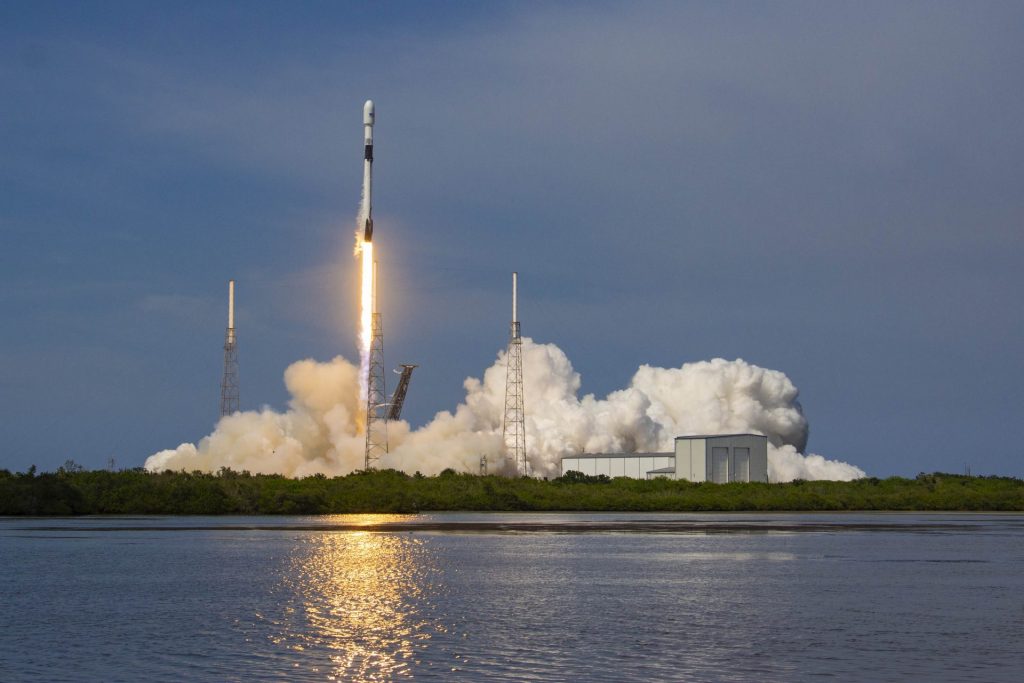
Block 5 updates:
SpaceX introduced a lot of changes on Block 5, allowing it to become the crewed-launching reusable rocket that we know today. To start, the Composite Overwrapped Pressure Vessel (COPV) had to undergo a complete redesign. NASA mandated the COPV redesign, as it had been the cause of both of the Falcon 9 failures: AMOS-6 and CRS-7.
Alongside with certification for human spaceflight, Block 5 came with a number of other major changes. To increase the amount of flight each booster could handle, and decrease the turnaround time, SpaceX reinforced the landing legs, upgraded the grid fins, and added a carbon fiber interstage. They also added heat resistant external paint and upgraded the engines. For more information about the changes in Block 5, and the other Blocks of the Falcon 9, check out this video by the Everyday Astronaut:
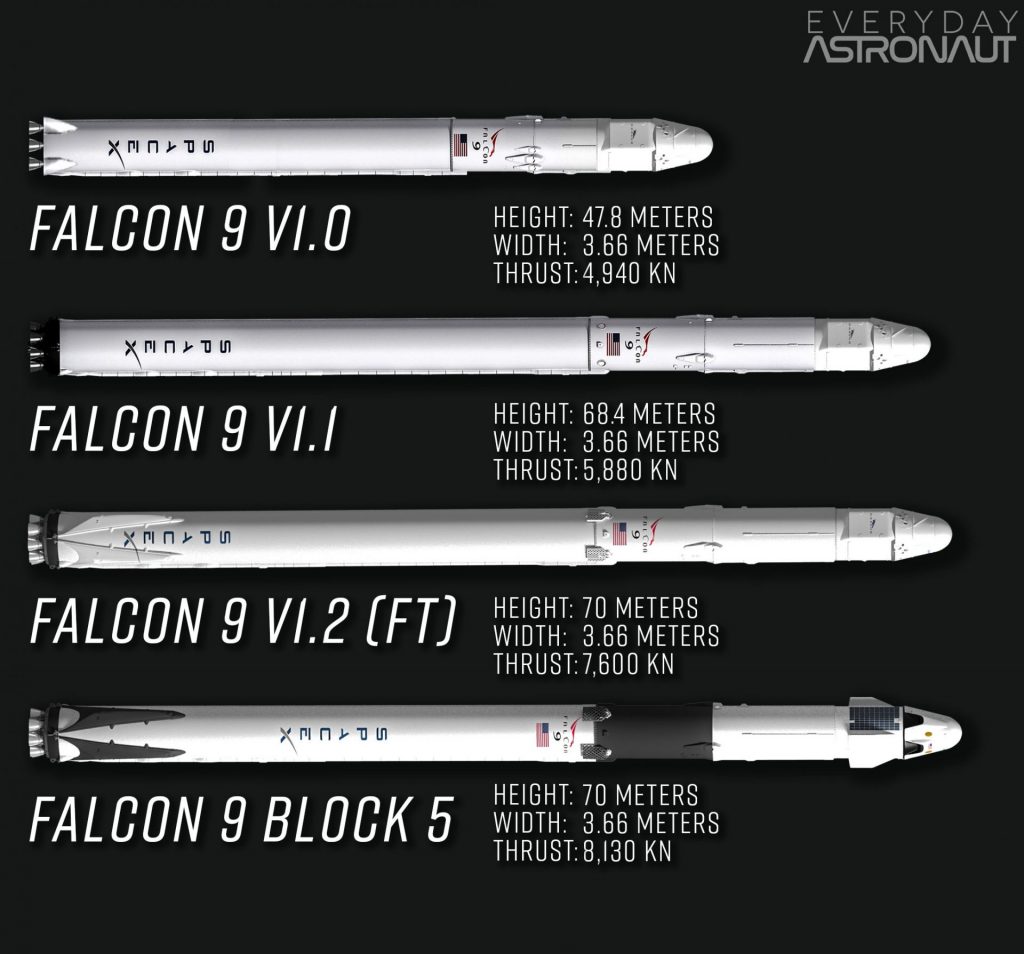
Falcon 9 Booster B1058
The booster supporting this mission is B1058. This booster has flown twice, on the SpaceX Demonstration Mission 2, on May 30, 2020. This booster’s second flight was on ANASIS-II, which launched on July 20, 2020. This will change the booster’s designation to B1058.3.
Following stage separation, the Falcon 9 will conduct 3 burns. These burns will softly touch down the booster on Of Course I Still Love You 633 km downrange.
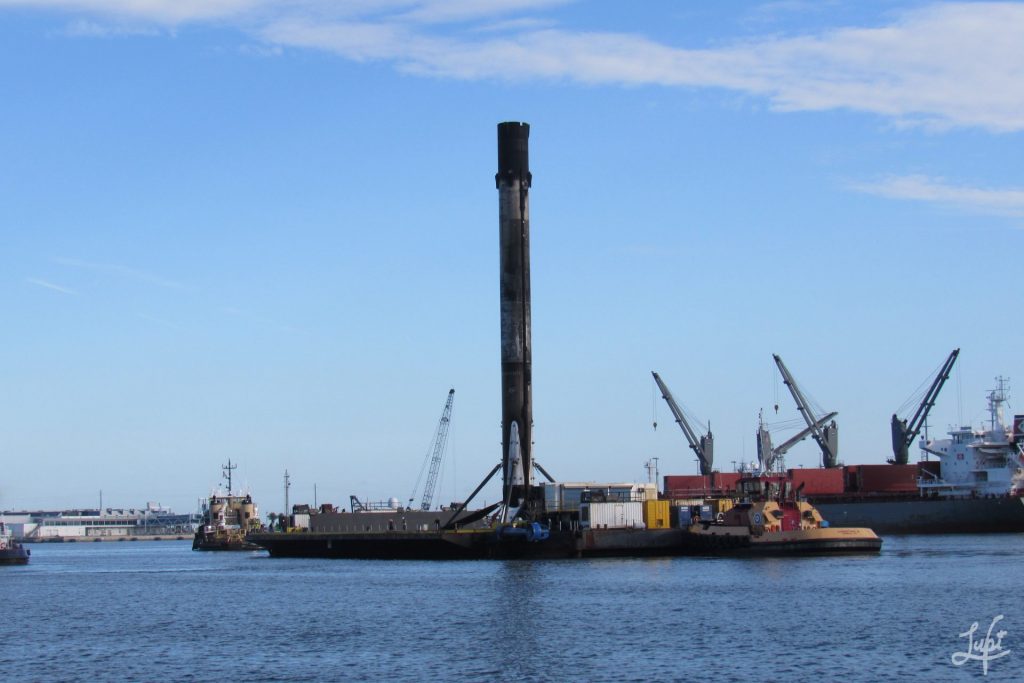
Fairing Reuse
SpaceX is the first entity ever that recovers and reflies its fairings. The recovery vessels, Go Ms. Tree and Go Ms. Chief, will most likely attempt to recover the fairing halves. After being jettisoned, the two fairing halves will use cold gas thrusters to orientate themselves as they descend through the atmosphere. Once at a lower altitude, they will deploy parafoils to help them glide down to a soft landing for recovery.
Starlink 12 Full Mission Profile
Hr/Min/Sec Event
– 00:38:00 SpaceX Launch Director verifies go for propellant load.
– 00:35:00 RP-1 (rocket grade kerosene) loading underway.
– 00:35:00 1st stage LOX (liquid oxygen) loading underway
– 00:16:00 2nd stage LOX loading underway
– 00:07:00 Falcon 9 begins engine chill prior to launch
– 00:01:00 Command flight computer to begin final prelaunch checks
– 00:01:00 Propellant tank pressurization to flight pressure begins
– 00:00:45 SpaceX Launch Director verifies go for launch
– 00:00:03 Engine controller commands engine ignition sequence to start
– 00:00:00 Falcon 9 Liftoff
Launch, Landing, and Satellite Deployment*
Hr/Min/Sec Event
00:01:12 Max Q (moment of peak mechanical stress on the rocket)
00:02:32 1st stage main engine cutoff (MECO)
00:02:36 1st and 2nd stages separate
00:02:43 2nd stage engine starts (SES-1)
00:03:22 Fairing deployment
00:06:40 1st stage entry burn complete
00:08:24 1st stage landing
00:08:48 2nd stage engine cutoff (SECO-1)
00:42:26 2nd stage engine starts (SES-2)
00:42:28 2nd stage cutoff (SECO-2)
01:01:24 Starlink 12 payload deploy
* All times are approximate







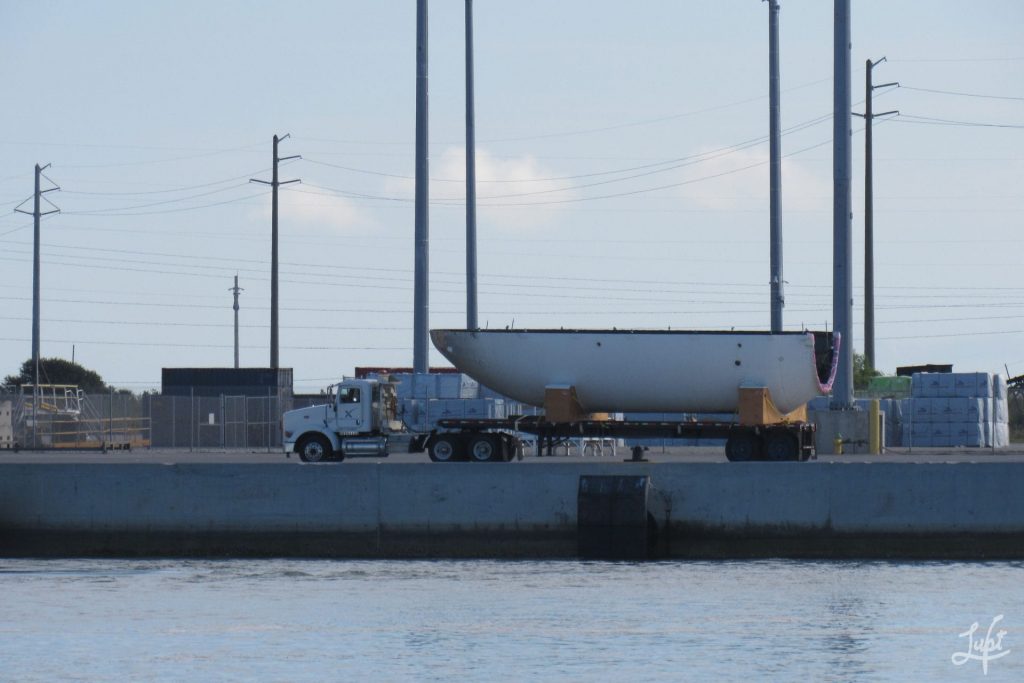

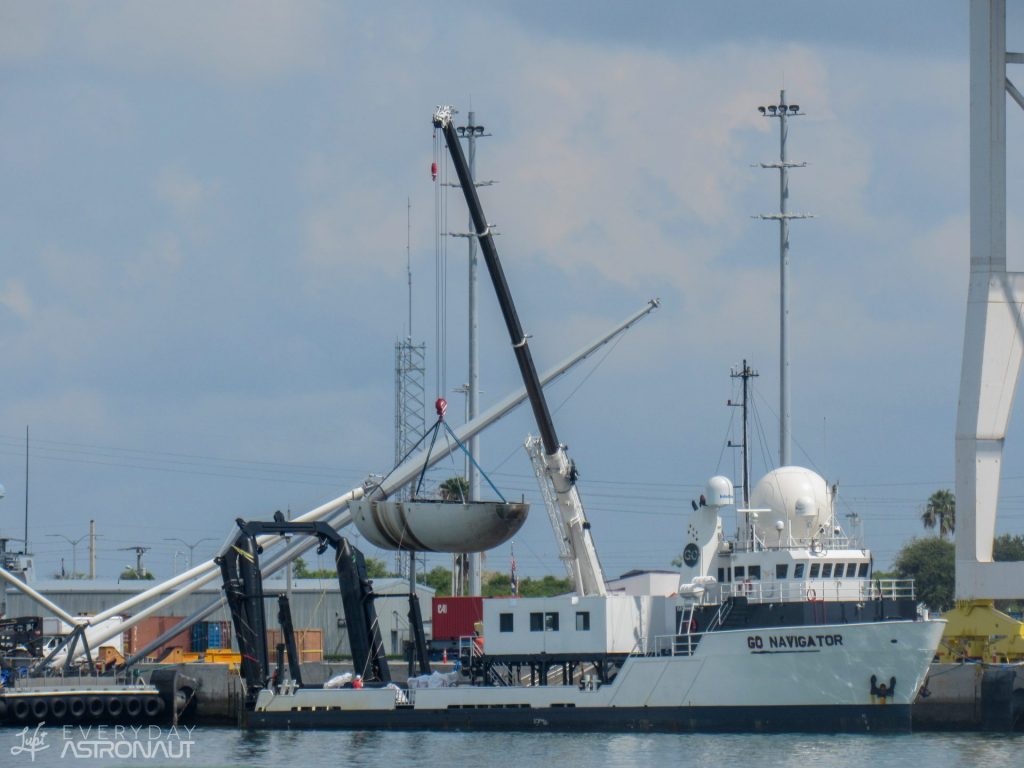
September 18, 2020 17:57 UTC | 13:57 EDT – Launch was scrubbed, apparently due to weather.
‘1st time a fairing has been comprised of a used half and a new half’ isn’t a logical sentence.
It should either read:
‘Has been compOsed of a used’ or
‘Has comrised a used’
When’s the next launch
Today
Amazing
Why is tim not streaming it?
I was wondering the same thing!! Where is our astronaut!?